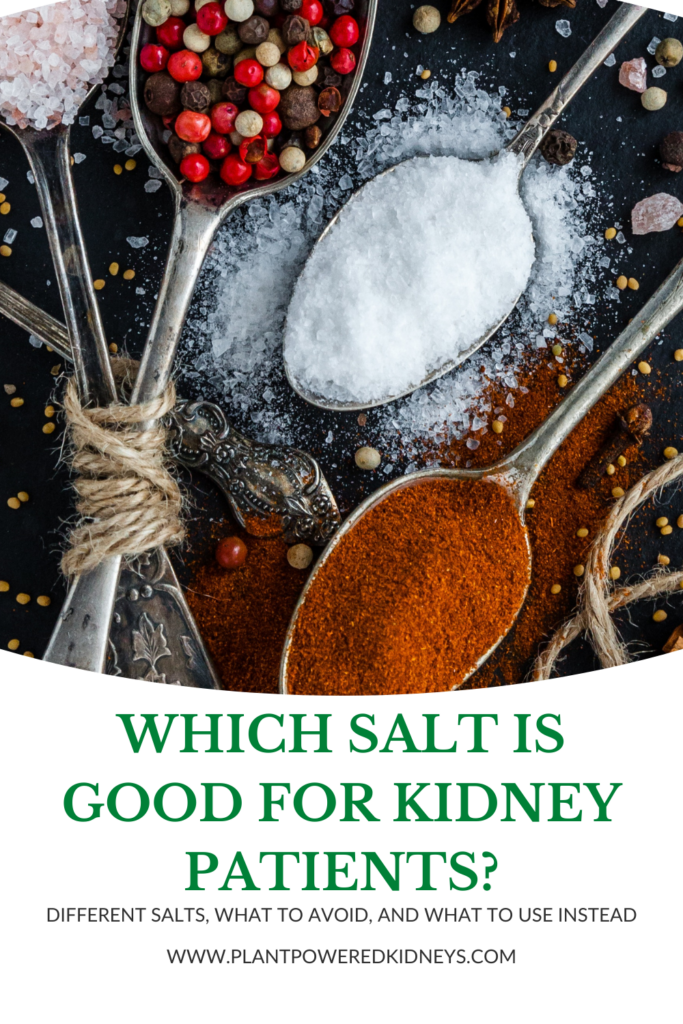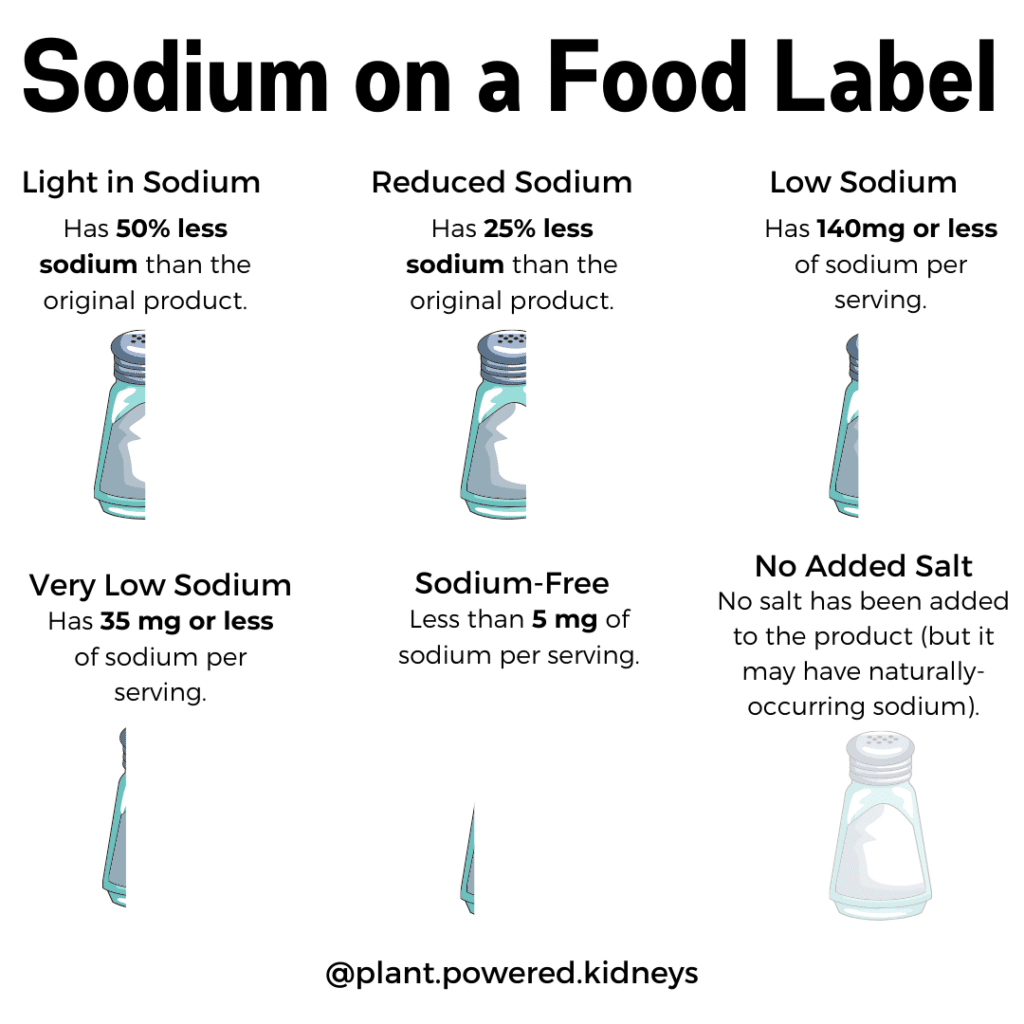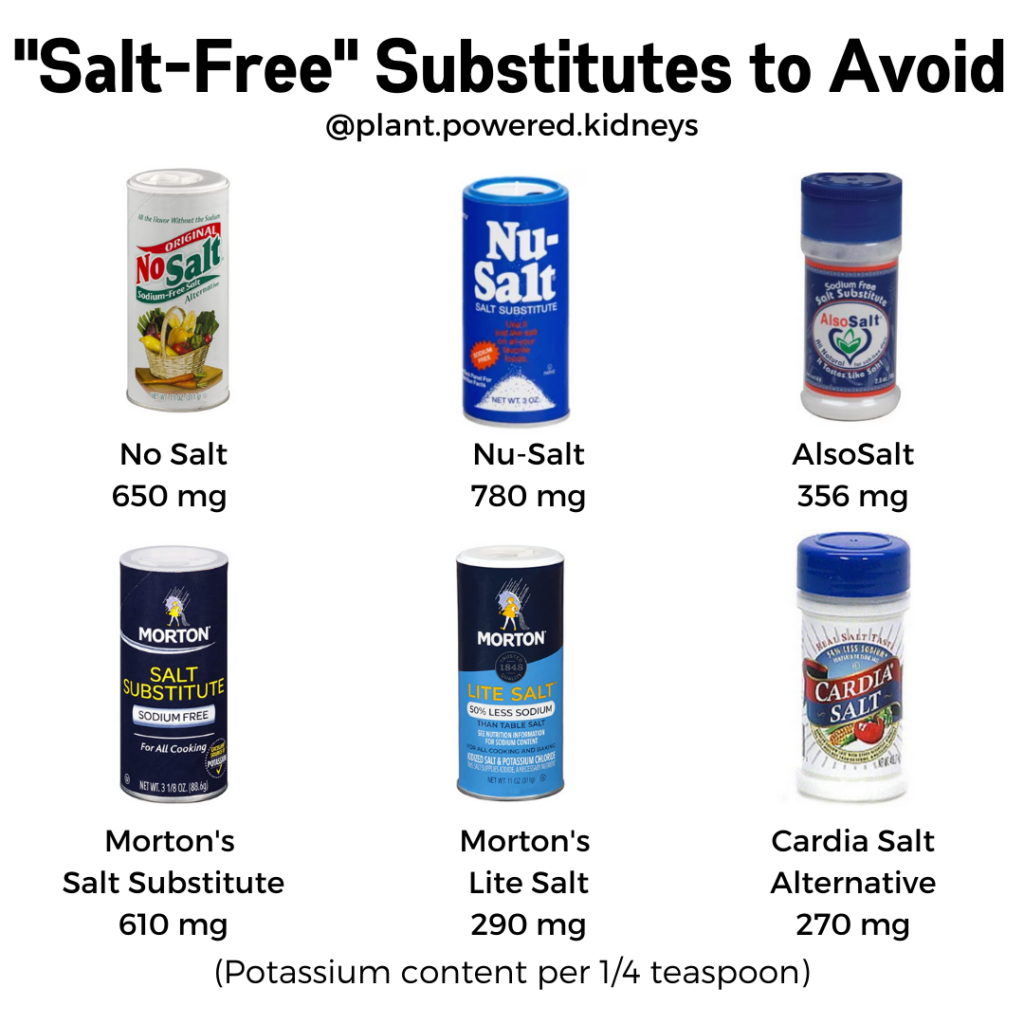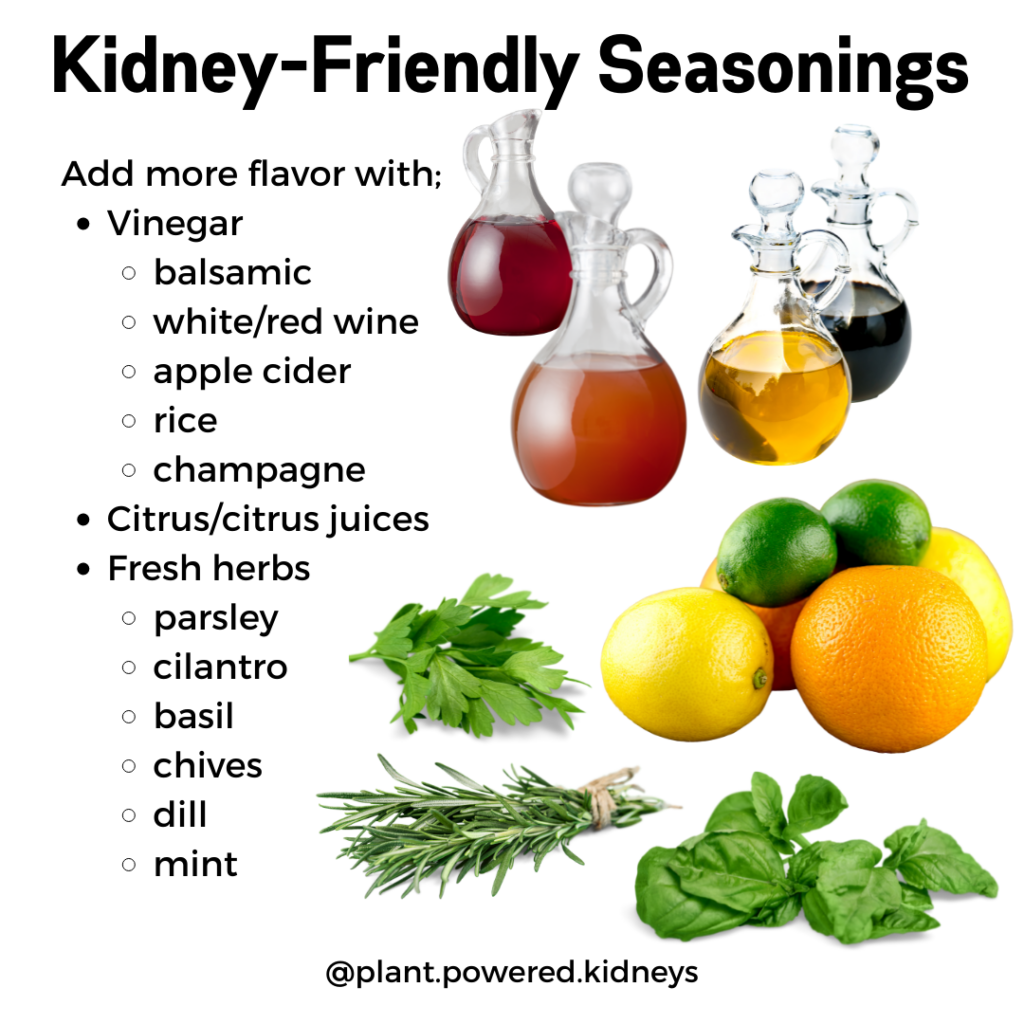If you have chronic kidney disease, your doctor has probably told you to watch your salt intake. This is because eating too much salt can cause your blood pressure to go up, which can be harmful to people with kidney disease. But you may be wondering if I need to limit salt, which salt is good for kidney patients? In this article, we will discuss the different types of salt and how much sodium each one contains. We will also talk about salt substitutes and what to look for in good options, as well as which ones to stay away from. Finally, we’ll provide tips for how to add flavor to your renal diet without adding more salt.
This article contains affiliate links in which we earn a small percentage of sales at no expense to you. We only ever provide affiliate links for products that we truly believe in and recommend for both ourselves and kidney warriors. Thank you for your support!
Table of Contents
What is Salt?
Salt is a mineral that is found in many foods. The most common type of salt is table salt, which is made up of minerals sodium and chloride.

What is Sodium?
Sodium is the component of salt that can raise blood pressure. Therefore, it is important to watch how much sodium you are eating if you have kidney disease.
Chloride is also important for health, but it does not affect blood pressure the way sodium does.
Low Sodium Diet for Kidney Health
Sticking to a low sodium diet is incredibly helpful to protect kidney health. High blood pressure is the second highest cause of kidney issues.
Too much sodium in the body can cause swelling at the ankles, hands, face, and other parts of the body.
There can be too much fluid around the lungs and/or heart with too much sodium. This can be very hard on the body and the kidneys.
Therefore, following a low sodium diet is very helpful to protect the kidneys!
Sodium Guidelines for Kidney Disease
Those with chronic kidney disease should follow general healthy guidelines of limiting sodium to under 2,300 milligrams (mg) per day.
This is equivalent to about 1 teaspoon of salt per day.
In some cases, those with high blood pressure, COPD, or other cardiovascular issues may need to follow a stricter sodium intake of 1,500 – 2,000 mg per day.
Label Reading for Sodium
It’s important to take a look at the sodium content of foods and products.
To find out how much sodium is in a food, look to the nutrition facts label.
Sodium is typically found just above the Total Carbohydrates section. It will generally include the amount of sodium per serving in milligrams (mg) and a percent.
The percent is based on the percentage of Daily Values. This will be labeled in short-hand as “%DV.”
In the case of sodium, the daily value is 2,300 mg.

Types of Salt
There are an incredible variety of salts. Since salt is from minerals that are found on the planet, salt can be harvested from a variety of locations.
Some of the most common types of salt include:
- Table Salt
- Kosher Salt
- Sea Salt
- Fleur de Sel (“flower of salt” in French)
- Sel Gris (gray salt)
- Pink Himalayan salt
- Kala Namek (Indian black salt)
- Hawaiian Alaea Red Salt
- Hawaiian Black Lava Salt
- Truffle Salt
How Much Sodium is in Salt?
While you may see different sodium content listed in your salt options, they’re not that different.
Even though there is a difference in sodium per teaspoon, all of these salts would have the same amount of sodium by equivalent weight.
| Type of Salt | Sodium per teaspoon | Sodium per gram |
|---|---|---|
| Table Salt | 2,320 milligrams | 388 milligrams |
| Kosher Salt | 1,120 milligrams | 393 milligrams |
| Sea Salt | 1, 872 milligrams | 375 milligrams |
| Pink Himalayan Salt | 1,680 milligrams | 368 milligrams |
However, one gram (1 g) of table salt compared to one gram (1 g) of sea salt each has the same amount of sodium – about 0.4 grams.
The reason there is a difference per teaspoon is that certain types of salt have larger crystals. The larger the salt crystal, the fewer can “fit” into that teaspoon measurement.
Additionally, the biggest difference in salt options is the mineral content. Sea salt varieties will have more trace minerals like chloride, magnesium, potassium, and calcium.
As there are many varieties of salts, based on the type and where it was harvested from, it’s best to check individual labels for the sodium content of salt.
The Dangers of Salt Substitutes
If you are trying to reduce your salt intake, you may think about using a salt substitute. These seem great as they’re labeled to have no sodium or be salt-free.
However, it is important to talk with your kidney doctor before using a salt substitute because they can be extremely high in potassium.
In some cases, just a 1/4 teaspoon serving has over 500 mg of potassium alone.
Examples of salt substitutes to avoid include:
- No Salt (650 mg potassium/serving)
- Nu-Salt (780 mg potassium/serving)
- AlsoSalt (356 mg potassium/serving)
- Morton’s Salt Substitute (610 mg potassium/serving)
- Morton’s Lite Salt (290 mg potassium/serving)
- Cardia Salt Alternative (270 mg potassium/serving)
It’s pretty easy to see how quickly potassium could add up if using one of these salt substitutes.

These types of salt substitutes are rarely- if ever – recommended for someone with kidney disease.
How do I add flavor to my food without using more salt?
You don’t need a lot of added ingredients to make your meals taste delicious!
Try adding some fresh herbs or spices like basil, oregano, or garlic powder for an extra kick without upping the sodium content too much.
Sodium-Free Seasonings for Kidney Patients
As mentioned above, salt substitutes are not recommended for people with kidney disease. But fear not! There are plenty of sodium-free or no-added-salt seasonings that can be great to include when cooking and eating!
Dash
Formerly known as Mrs. Dash, Dash blends have become a fairly common spice blend.
These are labeled as salt-free, but also do not use salt substitutes. Instead, they focus on using dried herbs and spices to provide a welcome flavor boost to any dish.
Some of the options Dash offers include:
- Garlic & Herb
- Fiesta Lime
- Spicy Jalapeno
- Everything but the Salt*
Chef Prudhomme
These spice blends have been a long-time recommendation for kidney patients. These are mixtures of herbs and spices, but with no salt added.
Many of the spice blends from this company are promoted to be used with animal meats. For those not on a low protein diet or need additional protein, like dialysis patients, these spice blends can be a great option.
(Ask your dialysis dietitian about getting samples!)
Flavor God
A newer salt-free seasoning blend is Flavor God. They have some creative blends, including a Garlic Lover’s Seasoning*, Spicy Everything, and even a Pizza seasoning blend.
Other unique flavors include Taco, Ranch, and even a Buttery Cinnamon Roll* blend. These are a great way to add some fun flavor to a plant-based menu!
Simply Organic Spice Right
This spice blend* is an all-purpose mixture of go-to flavors like garlic, parsley, and even orange peel.
This brand can be found in local grocery stores or online. Try their Salt-free Citrus seasoning for a bright burst of flavor!
Bragg Sprinkle Seasoning
Although not all of Bragg products are salt-free, the Sprinkle Seasoning is a great option!
It has 24 herbs and spices – and none of them is salt. This is a great addition to any dish – even popcorn!
Lawry’s Salt-Free 17 Seasoning
With spices like pepper, basil, oregano, sage, and turmeric, Lawry’s Salt-Free 17 Seasoning blend is a versatile flavor bomb.
This one has a bit more of a kick to it. That’s because black pepper is the primary ingredient. If you like adding some heat to your food, this one may be the versatile seasoning blend you’ve been looking for.
True Lime / True Lemon
You may recognize this brand from their water enhancers*, but did you know they also offer spice blends as well?
Besides crystalized lime and lemon, they also offer;
- lemon pepper
- lime, garlic & cilantro
- orange ginger
Shop our Amazon Store
We have these spice blends and more in our Amazon shop of Kidney-Friendly Seasonings and Spices*.
Be sure to check it out if you’re looking to stock your spice cabinet!
Herbs & Spices
We’ve reviewed several options of packaged spice blends that are salt-free and kidney-friendly. But there are even more natural salt-free seasonings you can find in your grocery store and farmer’s market!
Vinegar
Have you noticed how much space vinegar takes up in the grocery store? There is a huge variety of vinegar flavors and options.
Here’s a list of vinegar that can fill a kidney-friendly pantry:
- distilled white vinegar
- balsamic vinegar
- white balsamic vinegar
- apple cider vinegar
- white wine vinegar
- red wine vinegar
- champagne vinegar
- rice vinegar
- sherry vinegar
- malt vinegar
Vinegar can be used in salad dressings, marinades, sauces, and condiments like hot sauce. It can even be used for ingredient swaps.
They are also shelf-stable and won’t go bad for years. In fact, vinegar can last forever if stored properly.
To store vinegar, keep it in a cool and dry area. Keep it in the bottle or container it came in. Also, be sure to seal it completely after each use to prevent unnecessary air exposure.

Citrus
Lemons, limes, and oranges are not only a great source of Vitamin C. They can also be used to add flavor to food.
Citrus can be used in:
- salad dressings
- marinades
- sauces
- smoothies and juices
- garnishes
When using fresh citrus, be sure to wash the fruit thoroughly. This will help remove any bacteria or pesticides that may be on the skin.
If you’re using the zest, be sure to use a microplane* or grater. This will help you get the most flavor without the bitter pith.
And when using the juice, be sure to strain it to remove any seeds or pulp.
A bonus of adding citrus to a renal diet is that it can prevent kidney stones in stone formers.
Citrus with foods also helps with iron absorption due to its vitamin C content.
So which salt is good for kidney patients?
We’ve covered many types of salt and their sodium content. As you can see, the sodium content of different salts does not vary much.
In general, keeping the sodium content to under 2,300 milligrams of sodium per day is best. Some kidney patients may need to add less sodium. Less than 1,500 milligrams is not seen as safe or helpful to protect the kidneys.
Salt substitutes may sound like a great swap for a kidney patient. However, they are often sky-high in potassium. Because of this, they’re not generally recommended.
Salt-free seasonings like Dash, Lawry’s, and Flavor God can provide a ton of flavor to a meal without adding salt. It’s important to check the ingredients and nutrition facts to be sure there is no salt added.
Don’t forget about other kitchen items and foods that can be used in place of salt. Vinegars come in a ton of flavors and provide a tartness/”bite” in dressings, marinades, and condiments.
Citrus can also add that flavor boost you’re looking for, while also providing vitamin C. It also helps prevent kidney stones and low iron levels.
We hope this article has helped answer some of your questions about salt and kidney disease. For more information, please talk with your doctor or dietitian.



Great article, a lot of good info. I love to use herbs & spices for cooking & salads. your article gave me more options to look at. I also like the breakdown of the salt list. Thanks.
You’re most welcome, Greg! We’re happy to have this as a resource for you. 🙂
Jen — really comprehensive article on salt. I have high blood pressure and therefore trying to reduce my salt intake. I am also diabetic, so I try to get it down to about 1500 mg per day. However, when I get that low, I suffer extremely bad cramping at night…mostly legs and feet, but sometimes hands, as well. I have tried electrolyte drinks, but they don’t help. The only thing that seems to help is pickle juice and that increases my salt intake for the day!
Any ideas or suggestions? The cramps are really frequent and very painful.
Hi Rita! Thank you for your patience as I get back to responses! Cramping can be a sign of inadequate sodium or potassium intake. I’d recommend you review your labs and diet with your healthcare team to ensure you’re getting the right balance. 💚
I read an article about iodized salt. They recommended 1/4 tsp of Iodized salt to provide sufficient iodine per day.
Iodine is provided by iodized salt, yes, and most salt forms we get are already iodized. This is why an iodine deficiency is not very common here in the US.
Hi Jen
Thank you for all your research in salt free ckd flavors
Do you have a basic ckd cook booksto help me get the feel for changing my meal planning?
Starting out with ideas for a basic breakfast, lunch and dinner
When I read about potassium, phosphorus and salt each they contradict each other.
I also need to get a handle on how to stock my kitchen
I like to cook.My future gold is to be able to create meals that my family and friends can enjoy without asking for salt
Thank you
Cleve
Hi Cleve! We offer a eCookbook exclusively to those on our email list (it’s a secret, though!🤫). You can join our email list and get a free 6-day meal plan with grocery list here.
Thanks for the article! Just 2 thoughts. Diamond Crystal kosher salt is the lowest in sodium I’ve found. There are differences among kosher salt brands. Morton kosher salt has 480 mg salt/quarter teaspoon. Diamond Crystal has 280 mg salt/quarter teaspoon, Also, Penzey’s spices has a no salt blend that I like named Mural of Flavor.
Good finds, Lucy! Be sure to check the weight of the different salts… a quarter teaspoon of larger flakes may be lower because there are fewer flakes. When comparing same weight amounts (example 5 grams of one to 5 grams of another), the sodium content often comes out very similar. Just food for thought. 😉
Thank you Jen, for this wonderful article! I’m so thankful for all of the information you have provided. In the past, I have tried to be cautious about what I cook but you really have helped me change my cooking and eating habits. I look at the sodium levels of every item I purchase and try to be cautious about what I eat. Thank you so much for all of your help.
You’re so welcome, El. I appreciate the kind words and am happy to hear you have been able to make healthy diet changes that protect your kidneys.
Information on this sight is considerably helpful. I recently had a 9mm kidney stone surgically removed. My doctor said throw the salt bottle away. Looking forward trying the info provided here. Thanks
Happy to be a resource for you, Mike! 💚